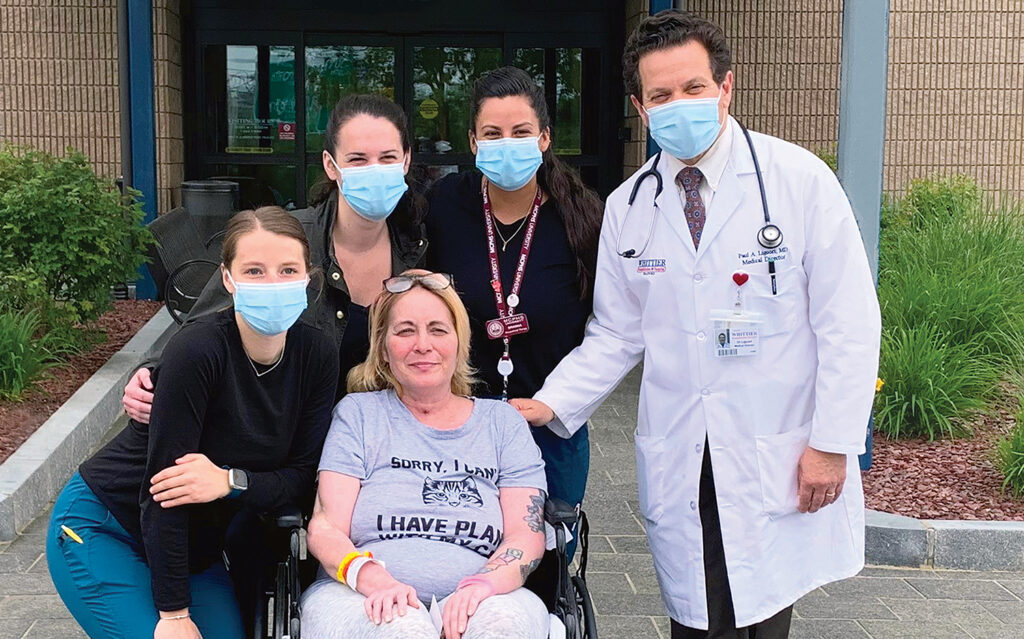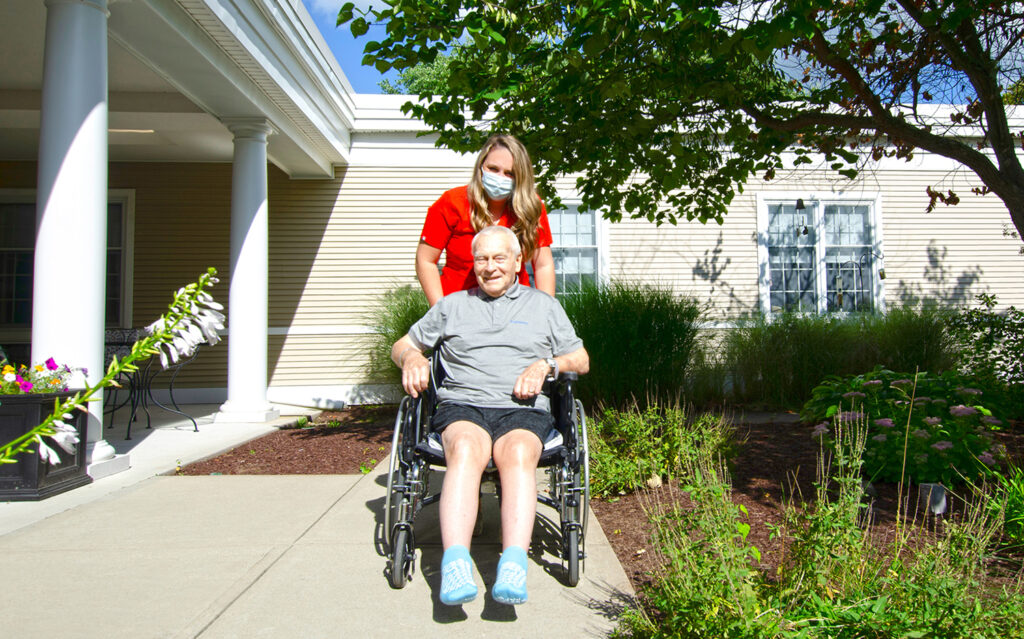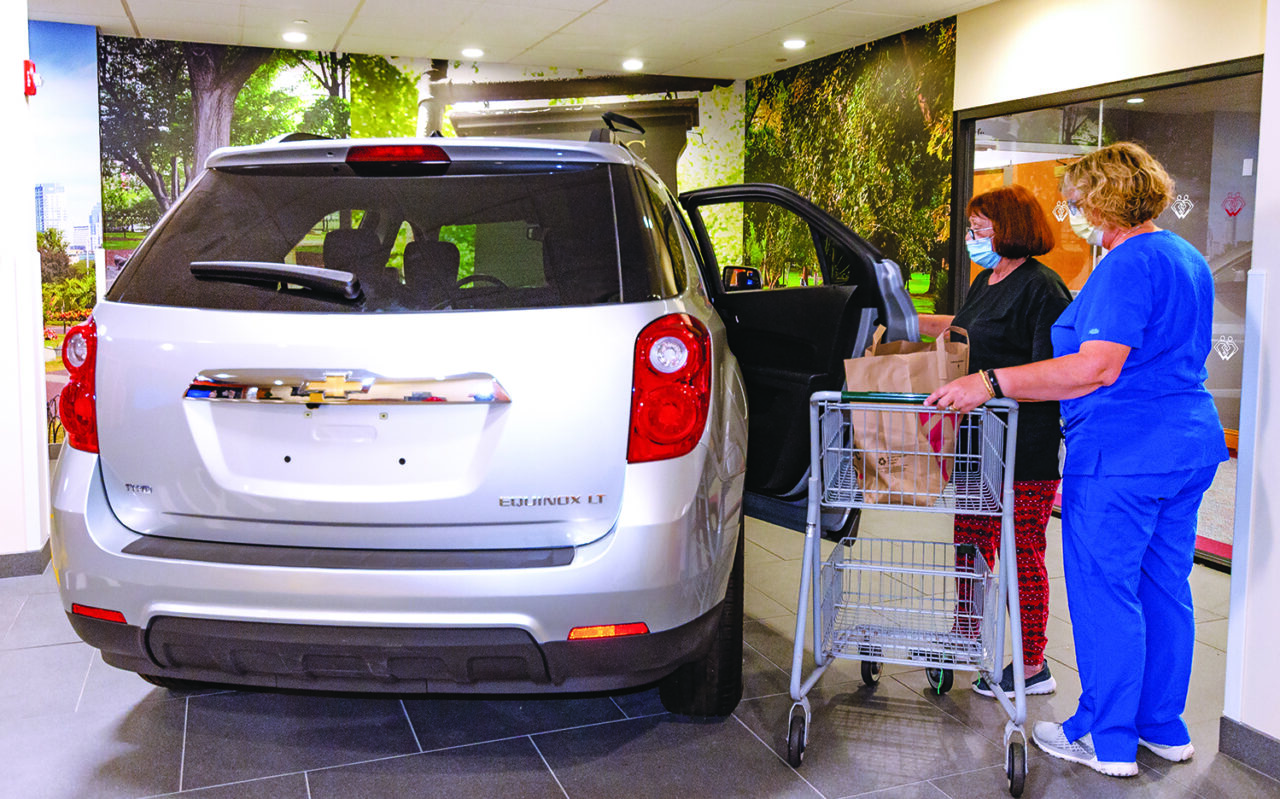When you are a patient at a hospital following an injury, critical illness, or surgery, you might still require additional monitoring and care upon discharge. Several different types of facilities can assist you. These facilities can give you the extra time, rehabilitation, and medical care needed to return home safely. Knowing the different types of available facilities will help you make the right choice when it comes to the next step in post-acute care for yourself or a loved one. Here’s a look at some of Whittier Health Network’s facilities and the services each one offers.
Long-Term Acute Care Hospital
 A Long-Term Acute Care Hospital, also known as an LTACH, provides care for patients requiring more medical management and a prolonged stay, typically lasting three to four weeks. LTACHs provide services and care to patients with complicated medical issues, including ventilator weaning, wound care, IV therapy, feeding tubes, or severe deconditioning after a prolonged hospital stay. Patients in an LTACH are followed by a physician daily and closely monitored by their medical team. LTACHs have specialized physicians, including hospitalists, pulmonologists, physiatrists, and varying consultants on staff.
A Long-Term Acute Care Hospital, also known as an LTACH, provides care for patients requiring more medical management and a prolonged stay, typically lasting three to four weeks. LTACHs provide services and care to patients with complicated medical issues, including ventilator weaning, wound care, IV therapy, feeding tubes, or severe deconditioning after a prolonged hospital stay. Patients in an LTACH are followed by a physician daily and closely monitored by their medical team. LTACHs have specialized physicians, including hospitalists, pulmonologists, physiatrists, and varying consultants on staff.
Inpatient Rehabilitation Facility
 An Inpatient Rehabilitation Facility, also known as an IRF, offers rehabilitative and therapeutic care to patients regaining function and strength following a surgical procedure, illness, or injury. Patients will remain at the IRF (Inpatient Rehabilitation Facility) to receive medical care and follow an intensive therapy program tailored to their specific needs. Patients will participate in therapy for at least three hours a day, five to six days per week.
An Inpatient Rehabilitation Facility, also known as an IRF, offers rehabilitative and therapeutic care to patients regaining function and strength following a surgical procedure, illness, or injury. Patients will remain at the IRF (Inpatient Rehabilitation Facility) to receive medical care and follow an intensive therapy program tailored to their specific needs. Patients will participate in therapy for at least three hours a day, five to six days per week.
Patients who stay in an IRF can rebuild their strength and mobility and recover from various illnesses or injuries, including joint replacements, brain injuries, strokes, cardiac events, and neurological disorders. Their length of stay usually ranges from two to three weeks and depends upon their specific goals, functional abilities now and prior to admission, and the level of support they have at home.
Skilled Nursing Facility
 Skilled nursing facilities provide medical care for patients who have suffered from a stroke, heart attack, infections, joint replacements, general deconditioning, and more. Also known as a SNF, these facilities can care for patients and provide short-term rehabilitation when they leave the hospital. Skilled nursing facilities are an excellent choice for patients who require additional rehabilitation to meet their goals and increase their independence with activities of daily living, such as bathing, dressing, and using the bathroom, to return home safely.
Skilled nursing facilities provide medical care for patients who have suffered from a stroke, heart attack, infections, joint replacements, general deconditioning, and more. Also known as a SNF, these facilities can care for patients and provide short-term rehabilitation when they leave the hospital. Skilled nursing facilities are an excellent choice for patients who require additional rehabilitation to meet their goals and increase their independence with activities of daily living, such as bathing, dressing, and using the bathroom, to return home safely.
Differences in LTACHs, IRFs, and SNFs
There are several variations between these three types of facilities:
Levels of therapy that are served: Both an LTACH and an IRF can offer intense therapy services. IRF regulations require that the patient participates in three hours of intense therapy at least five days a week. In an LTACH, the patients are much more medically complex; thus, they participate in an amount of therapy they can physically tolerate. The same is true for the SNFs. Therapy is provided, and goals are met, but it is not as intense and rigorous as the acute inpatient rehabilitation centers.
Medical care complexity: On-site physicians provide daily oversight and close monitoring of all patients at LTAC and IRFs. They are equipped to provide daily labs and diagnostic tests such as x-rays, ultrasounds, and swallow studies in-house. When patients become medically stable, if they still require more time with their rehabilitation before returning home, they are transferred to a less intense setting, such as a Transitional Care Unit or a Skilled Nursing Facility, where they will continue to work with therapy and receive nursing care.
Cost of Care: Skilled nursing facilities are a cost-effective alternative to private insurance, Medicare, and Medicaid. LTACHs and IRFs have doctors, nurse practitioners, and physician assistants in-house, and patients will be seen by a medical provider daily. Skilled nursing facilities have an MD or NP providing in-house care daily to long-term residents and short-term rehabilitation patients, but they rely on the nursing staff and therapists for the day-to-day monitoring, and the MD provides the oversight as needed. Thus, due to the patient’s medical complexity, the cost of care in LTACHs and IRFs is higher than that of a skilled nursing facility.
Staffing: LTACHs and IRFs have a dedicated team of physicians on staff who care for hospital-level patients daily. At a SNF, the physician or NP may visit the patient a few times per week.
Post-Acute Medical for Your Rehabilitation
Whittier’s post-acute rehabilitation continuum of care is just a click or phone call away when you decide on us for your care facility. Our clinical admissions team is highly trained in finding the perfect level of care for you or your loved one. Our friendly and helpful staff will help you navigate the admissions process and provide you with all pertinent information to make an informed decision regarding your or your loved ones’ healthcare needs. You will always be treated like part of our Whittier family from our initial interaction to our last caring exchange.
Have questions? Don’t hesitate to contact us to request a referral or a privately scheduled tour of one of our facilities.



